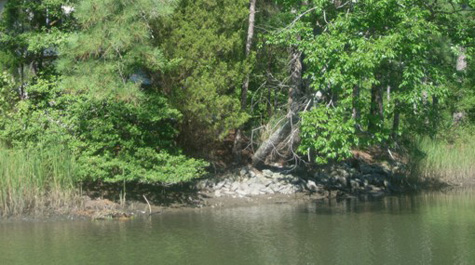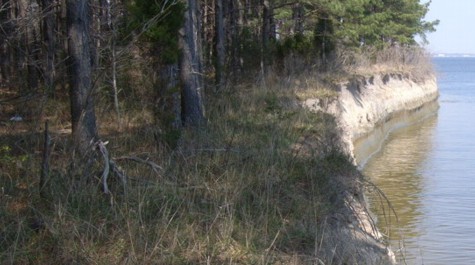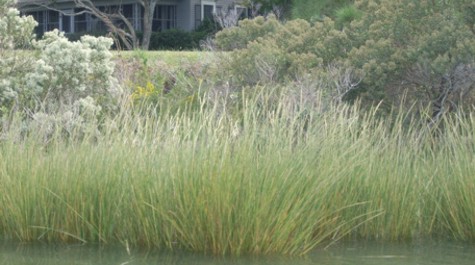Non-Structural Living Shoreline Options
The Shoreline Studies Program at the Virginia Insitute of Marine Science uses living shoreline methods for shore stabilization in order to maintain a more natural coastal profile. Structural living shorelines, such as sills, breakwaters, and transition structures called spurs, are effective in the maintenance of these shorelines. However, there are non-structural living shoreline methods of shore erosion control that seek to create a natural buffer as well as preserve and/or create habitat for benthic, estuarine, shallow water, and intertidal organisms.
Most non-structural living shoreline options are not suitable for medium or high energy areas and usually require ongoing maintenance, but many areas of the Bay’s tributaries are low energy environments that have very low erosion rates. These low energy environments may have minor bank scarping, or a marsh that has been shaded out by trees. These areas rarely need structures, and would benefit from the trimming of trees to let sunlight in and planting marsh on existing surfaces. This management technique can revitalize a shoreline is known as Marsh Management. In some instances, coir logs (fiber logs) can provide limited wave protection so that marsh plants can get established, but they are not permanent structures and will eventually decompose.
In forested regions, Forest Management practices can stabilize the bank and prevent further erosion. This is done by selectively removing dead, dying, and severely leaning trees, pruning branches with weight bearing load over the water, planting and/or allowing for re-generation of mid-story and ground cover vegetation.
As for areas with sandy shorelines, beach nourishment can widen the shore zone and provide protection for the base of the bank. However, when sand is placed without a structure, nature can move it away from the site.



